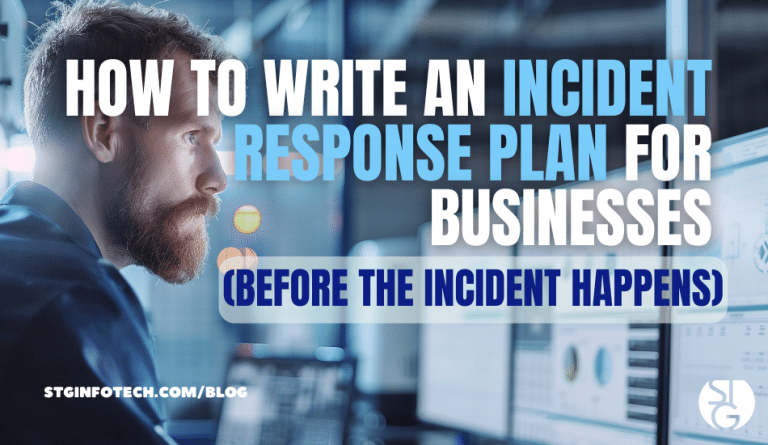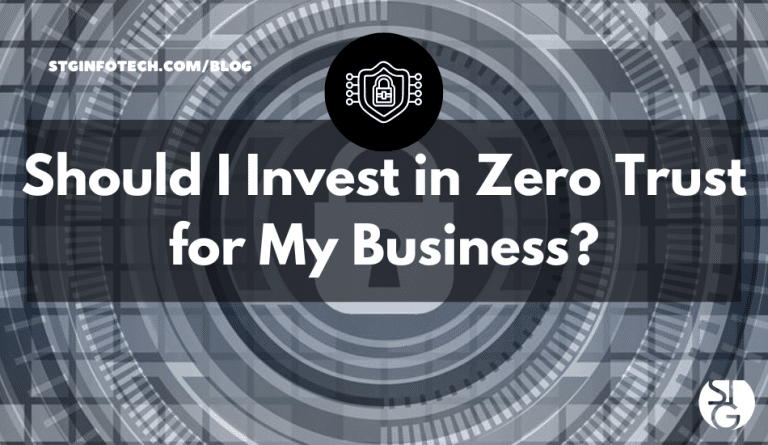Your 2022 Business Cybersecurity Checklist
Do you know if you’re doing everything you can for your business’ cybersecurity? If not, don’t stress! We’ve put together the ultimate business cybersecurity checklist you should be following to improve your security standings.
The fact is, no matter what size or industry your business is in, cybersecurity must be made a priority. Every business with digital assets faces cybersecurity threats.
Admittedly, it should be easier for business owners to track where they stand when it comes to cybersecurity. That is why we put together a checklist that will help you to identify risks, protect assets, and prepare for worst-case scenarios.
In addition, we’ll go over each step so you can better understand where your vulnerabilities lie and get you one step closer to defending your network.
If you’d like to follow along, here’s a link to a PDF version of this checklist.
Without further ado, let’s get into it.
Your 2022 Business Cybersecurity Checklist
1. Inventory Your IT Assets
If you don’t take inventory of your assets, how can you possibly protect them? Taking inventory of all your business’s technology is an important first step. This should include all company desktops, mobile devices, routers, etc.
Don’t forget to document all the software and applications in use. Over time, this list will evolve, so plan to update it regularly.
If your inventory includes mobile devices, make sure they are encrypted. You should be able to wipe these devices clean at any time. That way, if any of these devices are stolen or missing, you’ll be able to control the data.
2. Perform Regular Risk Assessments
Having an updated IT inventory list will make it easier to perform a risk assessment. In addition to the hardware and software you have to secure, you’ll want to determine your data assets.
For instance, if you work in healthcare, you have patient health information to protect. If you have a retail business, client payment information needs to be protected. Trade secrets, personnel information, and market trend data are examples of other important assets.
The part you play in the supply chain may also put you at risk. An expensive data breach at a major big-box retailer began with unauthorized access to the IT systems of its HVAC company.
While going through this assessment, think about the most critical threats you face.
For example, extreme weather events and natural disasters can be more prevalent depending on where you live. Perhaps hackers frequently target the industry you’re in. You should also consider whether or not you’re still employing outdated technologies.
3. Maintain a Strong Password Policy
We cannot express to you how important it is to implement strict password guidelines. Doing so will only help in protecting customer, employee, and proprietary data.
You should encourage everyone connected to your business to use password generators that ensure password complexity. Promote the use of a password manager to store all of those difficult-to-remember passwords safely.
Require and schedule password updates according to a set timeline or whenever there are data breaches. Use multi-factor authentication as an extra layer of protection to user access.
4. Update and Limit User Access
Make sure you limit access for your users. Team members only need access to the resources they require to do their jobs. Be limited with who you grant admin access to.
5. Protect Your End Points
With more people working remotely or in hybrid environments, firewalls are not enough to protect all your business IT endpoints.
Firewalls can check all incoming and outgoing traffic, but Geofencing can help track access based on IP address. Antivirus software and malware-removal tools will also play an important role.
6. Update Your IT
Updating your current operating system, web browsers, and software all support your security profile. Vendors update their technology to help you block attacks when threats or vulnerabilities are discovered. So, if you are one to ignore an update notification, you could be putting your company at risk.
If your company is reliant on old technology, it’s time to rethink that. Legacy technology is the first target for cybercriminals because they know those people don’t like to upgrade.
7. Secure Your Wi-Fi
Change the default password of your Wi-Fi device. And do it now!
Continue to rotate the password for your Wi-Fi to keep your network safe. Another helpful tip is to turn off your Wi-Fi during off-hours. You don’t want hackers to get in when no one will notice.
If you have employees that work away from the office, require them to use private and encrypted Wi-Fi. There is nothing less safe than public coffee shop Wi-Fi.
8. Monitor for Threats
You’ll want to set up scanning to check for patterns and detect potential attacks or vulnerabilities quickly. Stay up to date on the latest threats. You will benefit from staying in the know about new threats. This will help you know what signs to look for and be proactive.
9. Implement Regular Training and Awareness
Often, your employees are the weakest link in your cybersecurity. Mistakes happen and people grow careless over time.
Make ongoing awareness a priority, and don’t rely on onboarding training for too long. You might even want to test your employees’ ability to spot phishing emails and ransomware. Keep your security policies updated to reflect changing security trends. Communicate those new policies and offer training when needed.
10. Back Up Your Data
If anything bad happens, having a backup strategy can help secure your company’s data. Best practices for data backup consist of:
- Implementing a data backup process
- Keeping more than one data backup
- Encrypting data backups
- Limiting access to your data backups
- Testing your backups
Scheduling data backups regularly will help you through a hack or an emergency. But don’t rely fully on automated backups. Make sure you still use some form of human evaluation of the backup process.
11. Plan for Data Recovery
Plan for the worst. Data recovery goes a lot smoother and faster if you were proactive in evaluating and testing your process.
Write down the steps required if a breach occurs or natural disaster strikes, and know who is responsible for what. Doing so will cut downtime significantly.
Wrapping Up
Overall, every business needs to expect and prepare for a cybersecurity threat. This checklist will help you gauge risk and put plans in place to protect assets and recover sooner.
Fill out this checklist and return it to us for a complimentary Dark Web Scan of your business.
Our IT experts are here to help your business improve its security status. Contact us today at 323-638-1870.
Check out our recent YouTube video where we talk about IT Risks All CEOs Face.
Time to talk about improving your business’ cybersecurity status? Feel free to book a time to chat with us via the Calendly link below. We’d be happy to discuss ways to optimize your company’s IT.
Click here to schedule a free 15-minute meeting with Stan Kats, our Founder and Chief Technologist.
STG IT Consulting Group proudly provides IT Service for Small to Medium Businesses in Greater Los Angeles. We’d love to see if we can help you too!




